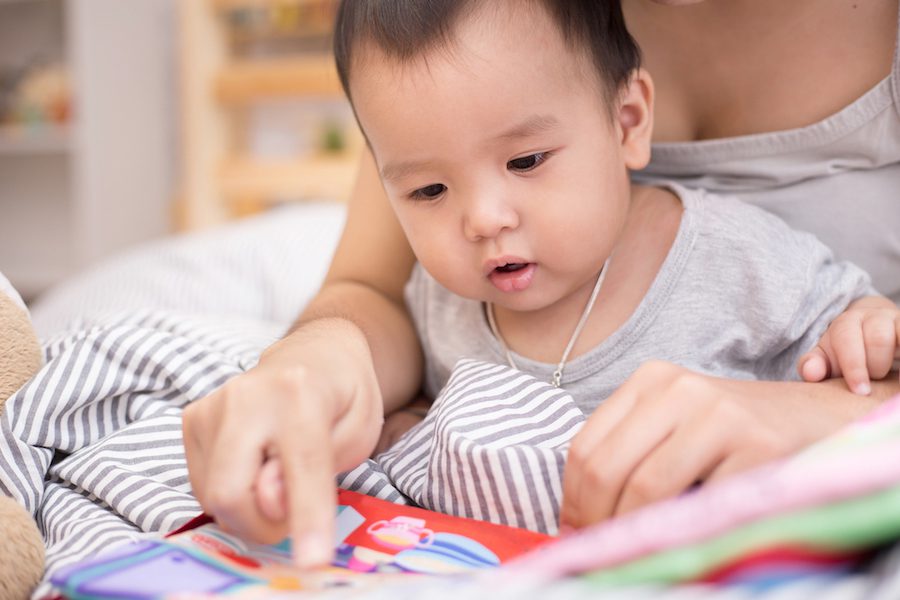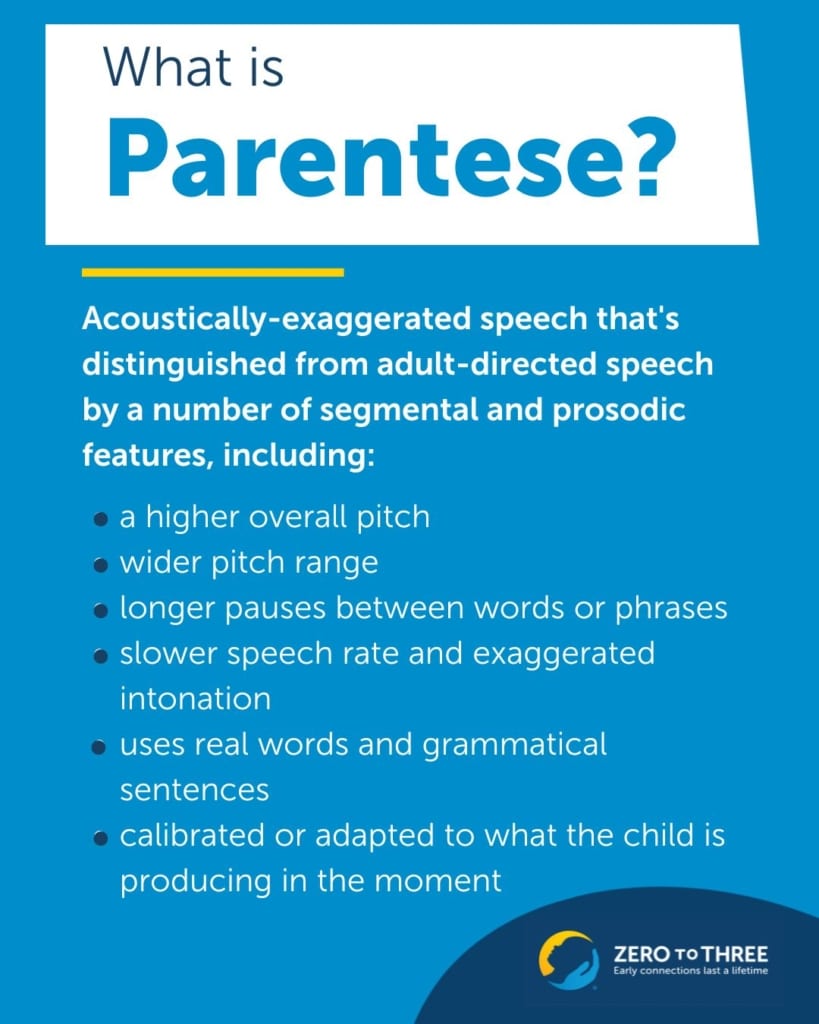Research has increasingly shown us the importance of exposing babies to a large amount of language from birth.
In addition to building language skills, talking with babies supports the development of cognitive and social-emotional skills. From turn-taking to narration of daily routines, there are many strategies that caregivers can use to engage with babies and toddlers through speech. One specific type of child-directed speech used by caregivers is known as parentese, notable for its higher pitch and elongated vowels.








